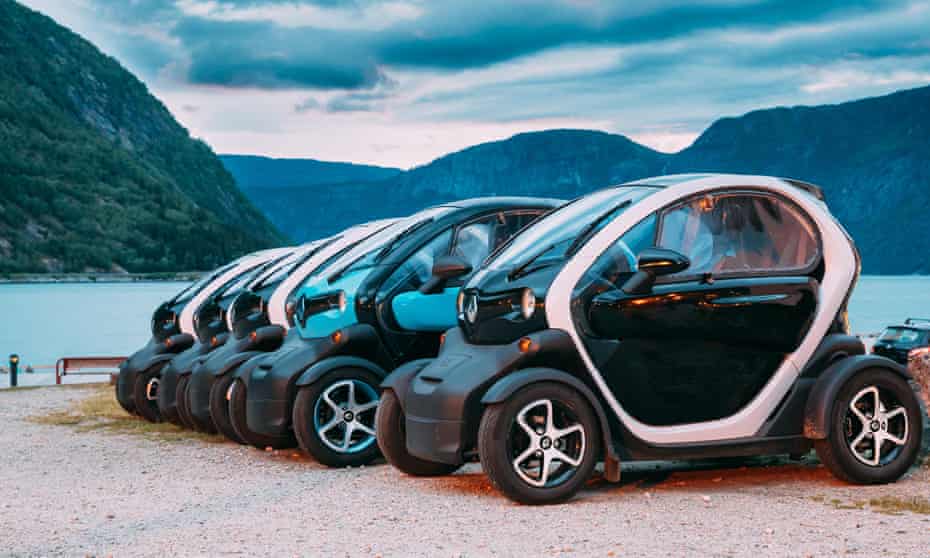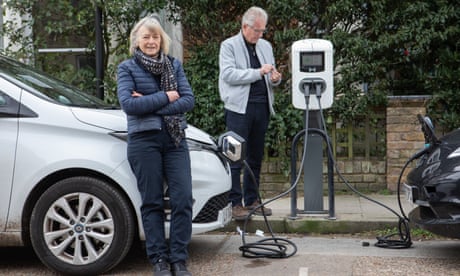Extract from The Guardian
Electric, hybrid and low-emission cars

I’ve just been standing for 10 minutes at a moderately quiet junction near where I work in Cambridge. During that time I’ve seen six electric vehicles (EVs) – three VW ID.3s, a Nissan Leaf, a Nissan white van and a Renault Zoe. Three years ago, if I’d been standing at the same spot, I’d have seen precisely zero such vehicles. And what that brought to mind was Ernest Hemingway’s celebrated reply to the question: how does one go bankrupt? “Two ways,” he said. “Gradually, then suddenly.”
Something similar is going on in relation to adoption of EVs in Britain. The hockey-stick graph is common in consumer technologies. We saw it in the early years of mobile phones, when text messaging was ignored by adults as an inferior form of email. But when pay-as-you-go tariffs arrived and teenagers could have phones, SMS use suddenly shot skywards. The arrival of kids represented a tipping point – a point in time when a group rapidly changes its behaviour by widely adopting a previously rare practice.
Britain hasn’t reached a tipping point with EVs yet, and so the first question is: when is it likely to occur? It needs to be earlier than most people think, because the government has decreed that sales of new petrol and diesel cars must cease by 2030. The second question, then, is: what will persuade – or force – people to change their cars?
The best place to look for answers is Norway, the one country that has been through the tipping point. Ten years ago, diesel cars accounted for 75% of new sales there. Today they make up just 2.3%. Two-thirds of all new cars sold there in 2021 were EVs and the predictions are that proportion will reach 80% this year. Ye olde internal combustion engine seems destined for extinction in that particular part of the frozen north.
How did Norway do it? Partly through luck: it’s a small country (population 5.5 million) which has abundant supplies of hydroelectric energy and – ironically – massive fossil-fuel reserves, the income from which is placed in a sovereign wealth fund and can be invested in all kinds of better ideas than burning them. The second factor was public opinion: people have been campaigning for EVs in Norway since the 1990s when a celebrated pop star and an environmentalist put an electric motor into a Fiat Panda and continually drove it through motorway tolls without paying until the resulting publicity made electrification a public issue.

But the third – and most significant – factor was government action. Norway, like all the Scandinavian democracies, is a high-tax society, and the taxes on imported cars were high – 25% VAT and a hefty registration fee. Both were waived for EVs. Motorway toll charges were removed for electric vehicles in 1997, city parking was made free for EVs in 1999 and access to bus lanes granted in 2005. The country installed 16,000 public charging stations (including 3,300 fast chargers). In the end, if you were a Norwegian contemplating buying a new car, going electric became a no-brainer. And Norway is well on its way to being an EV-only society by 2025.
So that’s how to do it. You just need lashings of money, a political system that responds to public opinion and a government that knows what it’s doing. Which is why it would be unwise to bet on the UK meeting its deadline of being an EV-only society by 2030 – a failure that would have pleased Douglas Adams (of blessed memory). “I love deadlines,” he once said, “I love the whooshing noise they make as they go by.” And the great thing about EVs is that they don’t growl, they merely whoosh.
No comments:
Post a Comment